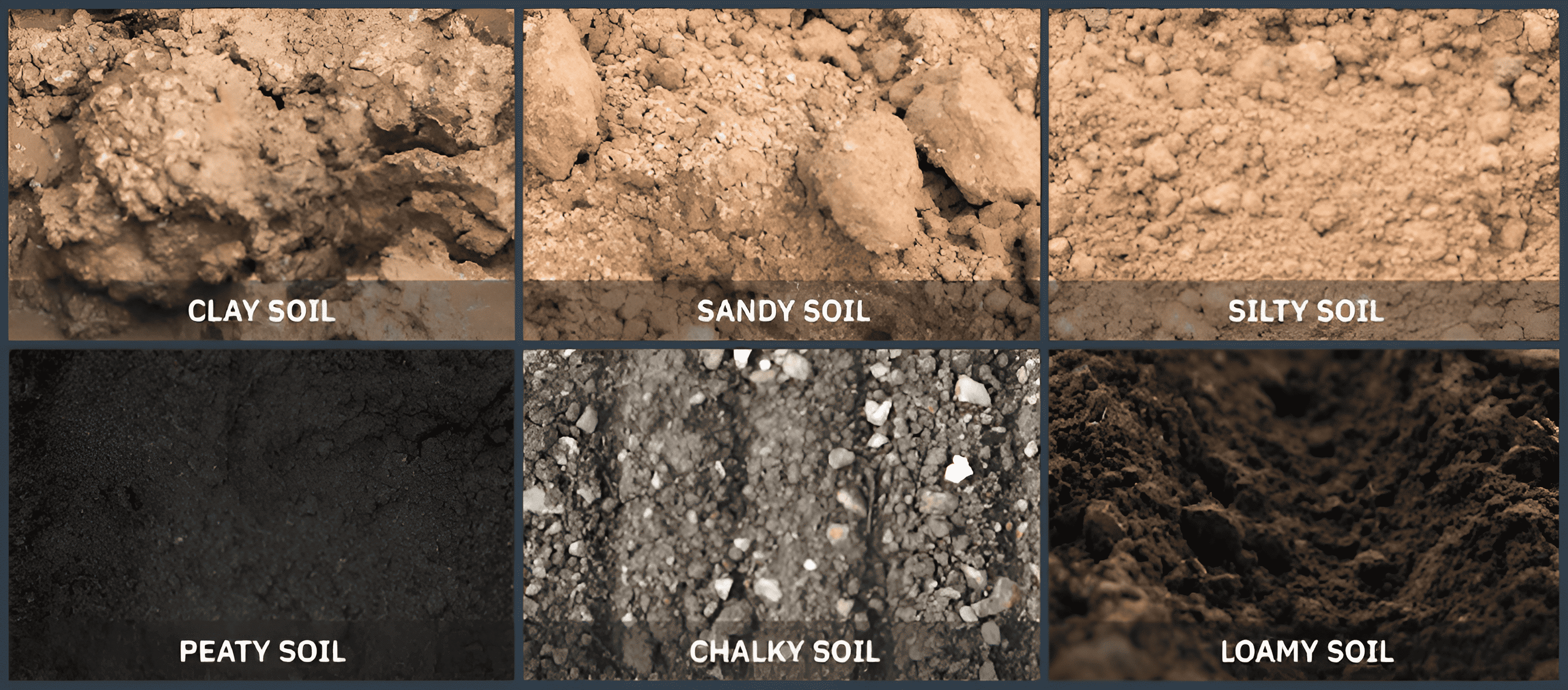
Soil, an indispensable resource, serves as the bedrock of any prosperous farming or gardening venture. It provides the necessary nourishment, moisture, and support for plants to flourish. Nevertheless, all soils are not equivalent. Each type possesses unique characteristics that influence the growth and cultivation of plants.
Globally, soil types are incredibly diverse, differing in texture, composition, and fertility. These differences are due to factors like climate, topography, vegetation, and geology. However, these soils can be broadly divided into eight main categories: clay, peat, chalk, sandy, loam, silt, rocky, and gravel soil.
Soil consistency refers to how well soil particles adhere to each other. The three primary types of soil consistencies are sandy, loamy, and clayey. Sandy soils are loose and grainy, with particles that don't stick together, while clay soils are dense, sticky, and tend to clump together. Loamy soils strike a balance between sandy and clay soils, incorporating both large and small particles, making them ideal for the majority of plants.
Soil composition alludes to the elements that constitute the soil. The four principal components are mineral matter, organic matter, water, and air. While mineral matter comprises the bulk of the soil, organic matter is derived from decomposing plants and animals. Water and air are vital components aiding in the transportation of nutrients and oxygen to plant roots.
Clay Soil - Clay soils are dense, heavy, and sticky when wet, restricting water and air penetration. These soils are mineral-rich and hard, making them suitable for short root crops like onions.
Peat Soil - Consisting of partially decomposed plant material, peat soil is acidic and retains high amounts of water. It is typically found in boggy areas and, despite being difficult to cultivate, is ideal for growing acid-loving plants like blueberries and cranberries.
Chalk Soil - Chalk soil is alkaline and rich in calcium carbonate. It drains well but does not retain moisture effectively. It's suited to plants that thrive in alkaline conditions, like brassicas, legumes, and alliums.
Sandy Soil - Sandy soil is loose, gritty, and drains water swiftly. It's low in nutrients but warms up quickly in the spring, making it perfect for root crops like carrots, parsnips, and radishes.
Loam Soil - A balanced mix of clay, sand, and silt, loam soil is highly fertile and retains moisture effectively, making it suitable for a wide variety of plants, including fruits, vegetables, herbs, and flowers.
Silt Soil - SComposed of fine particles, silt soil feels smooth to touch and is highly fertile, retaining moisture well, making it suitable for crops like corn, wheat, and barley.
Rocky Soil - Containing large rocks and boulders, rocky soil is difficult to cultivate but is good for growing fruit-bearing bushes.
Gravel Soil - Composed of large gravel-sized particles, gravel soil drains well but does not retain moisture, making it suitable for plants that prefer drier conditions like lavender and rosemary.

Different plants favor different soil types. Understanding the perfect soil type for each crop can boost yields and enhance the health and robustness of plants. Some examples of vegetables and their preferred soil types include:
Onions - Clay soils are preferred as they provide firm soil structure for proper bulb development.
Carrots - Sandy soils are ideal as they allow carrots to grow long and straight.
Tomatoes - Tomatoes favor loamy soil as it balances moisture retention and drainage, thereby preventing waterlogging and root rot, common problems in areas with above-average rainfall.
Potatoes - These tubers thrive in loose, well-draining soils like sandy loams, needing good aeration to prevent tuber rot.
Lettuce - Preferring fertile, well-drained soil with a high organic matter content, lettuce thrives in loamy soil with a slightly acidic pH.
Peppers - Both sweet and hot peppers prosper in soils with good drainage, high organic matter content, and a slightly acidic pH. Sandy loam or loamy soil is perfect for growing peppers.
Beans - Beans prefer fertile, well-draining soil with a slightly acidic pH. A loamy soil with high organic matter content yields excellent beans.
Cabbage - Cabbages prefer fertile, well-drained soils with a slightly alkaline pH. A loamy soil with high organic matter content is required to grow full-size cabbages.
Knowing the different soil types and their characteristics is paramount in deciding which crops to grow in a specific area. Providing the right soil type for a specific crop is critical for maximum yields and healthy, thriving plants.
Thankfully, the cavitated methods of plant propagation employed by Crop Circle Farms allows growers to modify soil type according to plant type, regardless of the base soil type in the field. The grower simply fills each cavity with the soil type that matches the vegetable to be grown.
This targeted approach to farm soil agriculture proves especially beneficial when cultivating different vegetables requiring different soil types in the same irrigated geometric crop circle.
Ready to transform your land into a high-yield, sustainable farm? Let Crop Circle Farms design and build a custom, low-impact, and water-efficient farm tailored to your needs. Double your income and cut your costs in half! Contact Us
Help us expand our mission to revolutionize agriculture globally. We are seeking partners to implement Crop Circle Farms to feed people in need. Together, we can build scalable food production systems that save water, reduce costs, and feed thousands of people. Contact Growing To Give